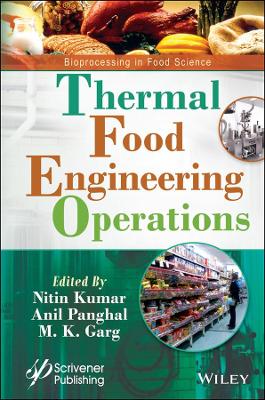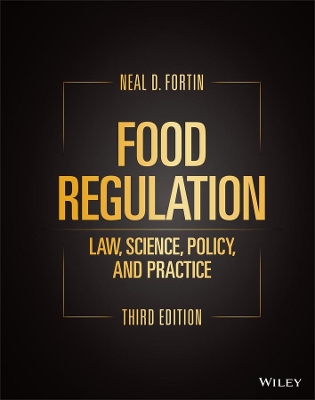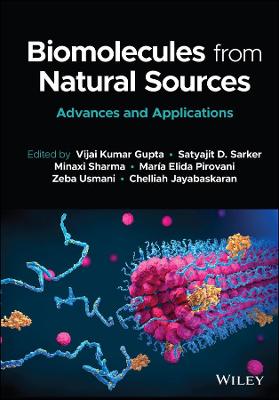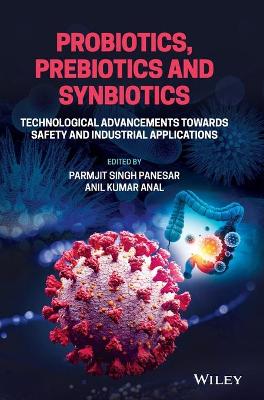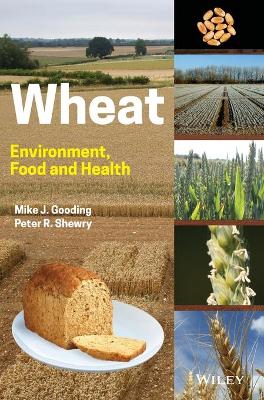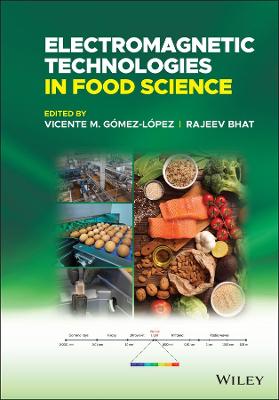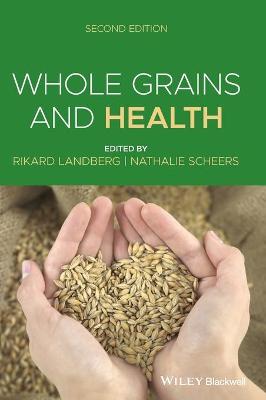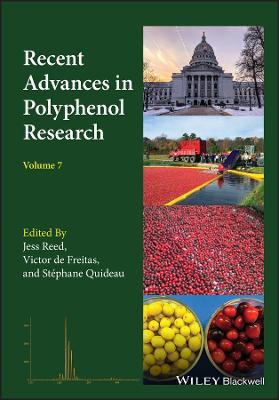Biopolymer-Based Food Packaging
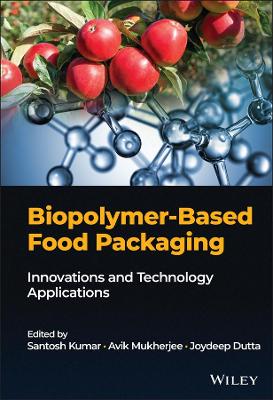 -15%
portes grátis
-15%
portes grátis
Biopolymer-Based Food Packaging
Innovations and Technology Applications
Kumar, Santosh; Dutta, Joydeep; Mukherjee, Avik
John Wiley & Sons Inc
04/2022
512
Dura
Inglês
9781119702252
15 a 20 dias
1092
Preface xix
1 An Overview of Natural Biopolymers in Food Packaging 1
Santosh Kumar, Indra Bhusan Basumatary, Avik Mukherjee, and Joydeep Dutta
1.1 Introduction 1
1.2 History and Background 4
1.3 Classification 6
1.3.1 Polysaccharide-Based Biopolymers 6
1.3.2 Protein-Based Biopolymers 11
1.3.3 Lipid-Based Biopolymers 13
1.3.4 Biopolymers Synthesized from Bio-derived Monomers 14
1.4 Advantages and Disadvantages 15
1.5 Properties and Applications 16
1.6 Conclusion and Perspectives 17
References 21
2 Biopolymers: The Chemistry of Food and Packaging 29
Rajib Majumder, Arpita Das, Avik Mukherjee, and Santosh Kumar
2.1 Introduction 30
2.2 Biopolymers, Packaging Surfaces, and the Chemistry of Foods 31
2.2.1 Biopolymers 31
2.2.2 Polysaccharide-Based Biopolymers 32
2.2.2.1 Starch and Derivatives 32
2.2.2.2 Cellulose and Derivatives 33
2.2.2.3 Chitin and Derivatives 33
2.2.2.4 Alginate and Pectin 34
2.2.2.5 Xanthan Gum 34
2.2.3 Protein-Based Biopolymers 35
2.2.3.1 Gelatin 35
2.2.3.2 Collagen 35
2.2.3.3 Soy Protein 36
2.2.3.4 Whey Protein 36
2.2.4 Aliphatic Polyester-Based Biopolymers 36
2.3 Properties 37
2.3.1 Physicochemical Properties 37
2.3.1.1 Density 42
2.3.1.2 Crystallinity 42
2.3.1.3 Melting Temperature (Tm) 43
2.3.1.4 Glass Transition Temperature (Tg) 44
2.3.1.5 Film-Forming Property 44
2.3.1.6 Solubility 44
2.3.1.7 Transparency 45
2.3.1.8 Thermal Stability 45
2.3.2 Mechanical Properties 45
2.3.3 Barrier Properties 46
2.3.4 Bio-activities 47
2.3.5 Biodegradability 49
2.4 Interactions Between Food and Packaging 50
2.4.1 Migration 50
2.4.2 Permeation 50
2.4.3 Sorption 51
2.5 Surface Properties of Packages and Food 52
2.5.1 Hydrophilicity and Hydrophobicity 52
2.5.2 Contact Angle 52
2.5.3 Wettability 53
2.6 Conclusion and Future Perspectives 53
References 54
3 Technologies for Biopolymer-Based Films and Coatings 66
Anjali Khuntia, N. Sai Prasanna, and Jayeeta Mitra
3.1 Introduction 67
3.2 Fabrication Techniques for Films 68
3.2.1 Solvent Casting or Wet Process 68
3.2.1.1 Film-Forming Solution (FFS) 69
3.2.1.2 Film Casting or Film Coating 71
3.2.1.3 Film Drying 71
3.2.2 Extrusion or Dry Process 71
3.2.3 Electrohydrodynamic Technique 76
3.2.4 Comparison and Application of Different Fabrication Techniques 76
3.3 Coating Methods 76
3.3.1 Dipping 77
3.3.2 Brushing 77
3.3.3 Spraying 77
3.3.4 Electrospraying 78
3.3.5 Layer-by-Layer (LBL) Electrostatic Deposition 78
3.3.6 Vacuum Impregnation (VI) 79
3.4 Properties 79
3.4.1 Physical Properties 79
3.4.1.1 Thickness 79
3.4.1.2 Density 80
3.4.2 Water Absorption Capacity and Sorption Analysis 80
3.4.3 Contact Angle/Wetting Tension 82
3.4.4 Mechanical Properties 82
3.4.4.1 Tensile 84
3.4.4.2 Puncture Tests 85
3.4.5 Permeability 88
3.4.5.1 Water Vapor Permeability 88
3.4.5.2 Gas Permeability 92
3.4.6 Optical Properties 93
3.4.7 Rheological Properties 93
3.4.7.1 Viscosity Tests 94
3.4.7.2 Melt Index Test 94
3.4.8 Thermal Properties 95
3.4.8.1 Differential Scanning Calorimetry 95
3.4.8.2 Thermogravimetric Analysis 95
3.4.8.3 Thermomechanical Analysis 96
3.4.8.4 Dynamic Mechanical Thermal Analysis 97
3.5 Applications 98
3.5.1 Composite Films or Multilayer Packaging 99
3.5.2 Nanostructured Film 99
3.5.2.1 Nanocomposite Films 99
3.5.2.2 Nanolaminated Films 101
3.6 Conclusion and Perspectives 101
References 101
4 Chitosan-Based Films and Coatings 110
Gitanjali Gautam, Ruchi Rani, Laxmikant S. Badwaik, and Charu Lata Mahanta
4.1 Introduction 110
4.2 Sources, Structure, and Properties 111
4.2.1 Sources 111
4.2.2 Structure 112
4.2.3 Properties 114
4.3 Isolation, Characterization, and Modifications 115
4.3.1 Isolation 115
4.3.1.1 Extraction from Crustaceous Shells 115
4.3.1.2 Extraction from Fungal Cell Wall and Mushrooms 116
4.3.1.3 Extraction from Insect Cuticles 117
4.3.1.4 Extraction from Terrestrial Animal Exoskeletons 118
4.3.2 Characterization 119
4.3.3 Modifications 119
4.4 Chitosan-Based Composite Films and Coatings 123
4.4.1 Gelatin-Based Edible Films and Coatings 123
4.4.2 Protein-Based Edible Films and Coatings 124
4.4.3 Starch-Based Edible Films and Coatings 125
4.4.4 Alginate-Based Edible Films and Coatings 125
4.5 Using Essential Oils as Antimicrobial Agent 126
4.5.1 Rosemary (Rosmarinus officinalis) 127
4.5.2 Cinnamon (Cinnamomum verum) 127
4.5.3 Oregano (Origanum vulgare) 127
4.5.4 Clove (Syzygium aromaticum L.) 128
4.5.5 Thyme (Thymus vulgaris) 128
4.6 Antimicrobial Activities 128
4.7 Effects on the Quality of Fruits and Vegetables 130
4.8 Effects on the Quality of Meat, Fish, and Seafood 130
4.9 Conclusion and Perspectives 137
References 138
5 Starch-Based Edible Films and Coatings 147
Priyadarshini, S.R., Srinivasan Krishnamoorthy, J.A. Moses, and C. Anandharamakrishnan
5.1 Introduction 148
5.2 Source, Structure, and Characteristics of Starch Granules 148
5.3 Physicochemical, Rheological, and Functional Properties 150
5.4 Chemical and Physical Modifications 152
5.4.1 Chemical Modifications 152
5.4.1.1 Crosslinking 152
5.4.1.2 Grafting 153
5.4.1.3 Esterification 153
5.4.1.4 Etherification 153
5.4.1.5 Oxidization 153
5.4.1.6 Cationic Modification 153
5.4.1.7 Dual Modification 154
5.4.2 Physical Modifications 154
5.4.2.1 Pregelatinized Starch 154
5.4.2.2 Annealing 154
5.4.2.3 Heat Moisture Treatment 154
5.4.2.4 Heat Drying 155
5.4.2.5 Osmotic Pressure Treatment 155
5.2.2.6 Freezing 155
5.2.2.7 Thermal Inhibition 155
5.4.2.8 Non-Thermal Modifications 155
5.5 Starch-Based Bionanocomposite Films and Coatings 156
5.6 Characterization 159
5.6.1 Film Thickness 159
5.6.2 Particle Size Determination 159
5.6.3 Scanning Electron Microscopy (SEM) 159
5.6.4 Fourier Transform Infrared Spectroscopy (FTIR) 160
5.6.5 X-ray Diffraction (XRD) 162
5.7 Applications 164
5.8 Recent Developments and Future Directions 168
5.9 Conclusion and Perspectives 169
References 170
6 Protein-Based Films and Coatings 178
Manashi Das Purkayastha and Santosh Kumar
6.1 Introduction 179
6.2 Types, Structures, and Properties 180
6.2.1 Casein 180
6.2.2 Whey 180
6.2.3 Gluten 181
6.2.4 Soy Protein 182
6.2.5 Collagen and Gelatin 182
6.2.6 Zein 183
6.3 Improvement in Physicochemical Properties of Proteins 183
6.3.1 Plasticizers 184
6.3.2 Physical and Chemical Crosslinking 185
6.4 Protein-Based Nanocomposites and Their Various Properties 187
6.5 Fabrication Techniques 192
6.5.1 Direct Casting 192
6.5.2 Coating 192
6.5.3 Spread Coating 193
6.5.4 Spin Coating 194
6.5.5 Spray Coating or Spraying 194
6.5.6 Dip Coating or Immersion Coating 194
6.5.7 Fluidized-Bed Coating 195
6.5.8 Pan Coating or Panning 195
6.5.9 Layer-by-Layer Assembly 195
6.5.10 Electrospinning 196
6.5.11 Extrusion 196
6.5.12 Compression Molding 198
6.5.13 Lamination 199
6.6 Applications 200
6.6.1 As Carrier of Antimicrobial Agents 201
6.6.2 As Carrier of Antioxidants 203
6.6.3 As Carrier of Flavoring Compounds 204
6.6.4 As Carrier of Live Microorganisms 206
6.7 Conclusion and Perspectives 208
References 209
7 Microbial Polysaccharides (MPs) in Food Packaging 225
C. Shashikumar, Sudip Mitra, and Siddhartha Singha
7.1 Introduction 225
7.2 Production 227
7.3 Extraction and Purification 230
7.4 Characterization 230
7.4.1 Chemical Structure 234
7.4.2 Physicochemical Properties 239
7.4.2.1 Xanthan 239
7.4.2.2 Scleroglucan 239
7.4.2.3 Hyaluronic Acid or Hyaluronan 239
7.4.2.4 Xylinan or Acetan 239
7.4.2.5 Dextran 240
7.4.2.6 Gellan 241
7.4.2.7 Curdlan 242
7.4.2.8 Bacterial Cellulose 243
7.4.2.9 Pullulan 243
7.4.2.10 Alginate 243
7.4.2.11 Levan 244
7.4.2.12 ?-Glucan 244
7.4.2.13 FucoPol 244
7.4.2.14 Kefiran 245
7.4.2.15 Polyhydroxyalkanoate 245
7.4.3 Film Formability and Properties Relevant for Packaging 245
7.5 Strategies for Tailoring MP Structures for Packaging Film or Coat Applications 249
7.6 Applications and Their Commercialization Status 251
7.7 Conclusion and Perspectives 255
References 256
8 Polylactic Acid (PLA)-Based Composites in Food Packaging 264
M. Sukumar, K. Sudharsan, and Radha Krishnan K.
8.1 Introduction 264
8.1.1 Production of Lactic Acid 266
8.1.2 Properties 267
8.1.3 PLA Composites as Food Packaging Materials 269
8.2 Isolation and Purification 272
8.3 PLA-Based Antimicrobial Nanocomposites 274
8.4 Applications 276
8.5 Conclusion and Perspectives 277
References 278
9 Antimicrobial Agents in Films and Coatings 282
Yashaswini Premjit, Gulshan Kumar Malik, and Jayeeta Mitra
9.1 Introduction 283
9.2 Classification 284
9.2.1 Natural Antimicrobials 284
9.2.1.1 Plant-Based Antimicrobials 290
9.2.1.2 Microbial-Based Antimicrobials 291
9.2.1.3 Animal-Based Antimicrobials 292
9.2.2 Chemical Antimicrobials 293
9.2.2.1 Nitrites 293
9.2.2.2 Chlorine Dioxide 293
9.2.3 Antimicrobial Nanostructures 294
9.2.3.1 Nanocarriers for Antimicrobials 294
9.2.3.2 Silver Nanoparticles 294
9.2.3.3 Chitosan Nanostructures 294
9.2.3.4 Nanoclays 294
9.2.3.5 Metal Oxide Nanoparticles 295
9.3 Choice of Materials 295
9.4 Methods of Addition 299
9.4.1 Antimicrobial Edible Coatings 299
9.4.2 Antimicrobial Films 303
9.4.3 Antimicrobial Pads 305
9.4.4 Antimicrobial Sachets 306
9.4.5 Modified Atmospheric Packaging 307
9.5 Effect on Packaging Film Properties 308
9.5.1 Effect on Mechanical Properties 308
9.5.2 Effect on Barrier Properties 310
9.5.3 Effect on Appearance, Color, and Transparency 310
9.5.4 Effect on Surface Hydrophilicity/Hydrophobicity of Films 313
9.6 Mechanisms of Action 313
9.6.1 Essential Oils 313
9.6.2 Organic Acids 314
9.6.3 Animal-Based Antimicrobials 314
9.6.4 Antimicrobial Peptides 315
9.6.5 Antimicrobial Nanoparticles 315
9.6.5.1 TiO2 315
9.6.5.2 ZnO 316
9.6.5.3 Ag NPs 316
9.7 Release Kinetics from Packaging Systems to Food 317
9.8 Food Regulations 319
9.9 Commercialization 320
9.10 Conclusion and Perspectives 320
References 322
10 Nanomaterials in Food Packaging 336
Santosh Kumar, Avik Mukherjee, Sweety Kalita, Namrata Singh, Vimal Katiyar Atanu Mitra, and Dipankar Halder
10.1 Introduction 336
10.2 Nanomaterials and Food Packaging Concepts 337
10.3 Applications 339
10.3.1 Supplementing Packaging Characteristics 339
10.3.1.1 Nanoclay 342
10.3.1.2 Graphene 345
10.3.1.3 Organic Nanofillers 345
10.3.2 Antimicrobial Packaging 346
10.3.3 Extending Shelf-Life of Food 347
10.3.4 Inducing Smartness/Intelligence 351
10.4 Migration to Packaged Food Items 353
10.5 Environmental and Safety Aspects 354
10.5.1 Impact on Human Health and the Environment 354
10.5.2 Regulations on Use in the Food Sector 356
10.6 Conclusion and Perspectives 357
References 358
11 Silver and Zinc Oxide Nanoparticles in Films and Coatings 368
Abhishek Roy, K. Dharmalingam, and R. Anandalakshmi
11.1 Introduction 368
11.2 Antimicrobial Properties 369
11.3 Biopolymer-Based Silver Nanocomposites 375
11.4 ZnO Nanostructures in Biopolymers 377
11.5 Applications of Silver Bionanocomposites 379
11.6 Applications of ZnO Bionanocomposites 383
11.7 Conclusion and Perspectives 384
References 385
12 Plant-Based Active Compounds in Food Packaging 394
N. Arul Manikandan, Kannan Pakshirajan, and G. Pugazhenthi
12.1 Introduction 394
12.2 Plant-Based Active Compounds 396
12.2.1 Simple Phenolic Compounds 396
12.2.2 Flavones, Flavanols, and Flavonoids 396
12.2.3 Quinones 396
12.2.4 Tannins 397
12.2.5 Coumarins 398
12.2.6 Alkaloids 398
12.2.7 Terpenes 398
12.3 Active Components to Control Microbial Spoilage 398
12.3.1 Turmeric 405
12.3.2 Cinnamon 405
12.3.3 Lemongrass 405
12.3.4 Neem 406
12.3.5 Coriander 406
12.3.6 Garlic 406
12.3.7 Rosemary 406
12.3.8 Grapefruit Seed 407
12.3.9 Aloe Vera 407
12.3.10 Oregano 407
12.4 Active Materials to Control Food Oxidation (Food Antioxidants) 408
12.4.1 Quercetin 408
12.4.2 Carnosic Acid 409
12.4.3 Ellagic Acid 410
12.4.4 Ferulic Acid 410
12.4.5 ?-Tocopherol 411
12.5 Polymer-Based Composites 411
12.6 Conclusion and Perspectives 415
References 415
13 Essential Oils in Active Films and Coatings 422
K. Dharmalingam, Abhishek Roy, and R. Anandalakshmi
13.1 Introduction 422
13.2 Classifications and Components 423
13.3 Properties and Characteristics 424
13.4 Encapsulation 425
13.5 Biopolymer-Essential Oil Composites 428
13.6 Applications 432
13.7 Conclusion and Perspectives 438
References 439
14 Edible Films and Coatings 445
Indra Bhusan Basumatary, Sweety Kalita, Vimal Katiyar, Avik Mukherjee, and Santosh Kumar
14.1 Introduction 445
14.2 Biopolymers 447
14.2.1 Polysaccharides 447
14.2.2 Proteins 448
14.2.3 Lipids 450
14.3 Natural Active Components 450
14.3.1 Plant Extracts 450
14.3.2 Antimicrobial Peptides 452
14.3.3 Probiotics 453
14.4 Nanomaterials 453
14.4.1 Inorganic Nanomaterials 453
14.4.2 Organic Nanomaterials 455
14.5 Extending Shelf-Life of Food 456
14.5.1 Fruits and Vegetables 456
14.5.2 Meat, Poultry, and Fish 459
14.5.3 Milk and Dairy Products 460
14.6 Conclusion and Perspectives 460
References 465
Index 476
Preface xix
1 An Overview of Natural Biopolymers in Food Packaging 1
Santosh Kumar, Indra Bhusan Basumatary, Avik Mukherjee, and Joydeep Dutta
1.1 Introduction 1
1.2 History and Background 4
1.3 Classification 6
1.3.1 Polysaccharide-Based Biopolymers 6
1.3.2 Protein-Based Biopolymers 11
1.3.3 Lipid-Based Biopolymers 13
1.3.4 Biopolymers Synthesized from Bio-derived Monomers 14
1.4 Advantages and Disadvantages 15
1.5 Properties and Applications 16
1.6 Conclusion and Perspectives 17
References 21
2 Biopolymers: The Chemistry of Food and Packaging 29
Rajib Majumder, Arpita Das, Avik Mukherjee, and Santosh Kumar
2.1 Introduction 30
2.2 Biopolymers, Packaging Surfaces, and the Chemistry of Foods 31
2.2.1 Biopolymers 31
2.2.2 Polysaccharide-Based Biopolymers 32
2.2.2.1 Starch and Derivatives 32
2.2.2.2 Cellulose and Derivatives 33
2.2.2.3 Chitin and Derivatives 33
2.2.2.4 Alginate and Pectin 34
2.2.2.5 Xanthan Gum 34
2.2.3 Protein-Based Biopolymers 35
2.2.3.1 Gelatin 35
2.2.3.2 Collagen 35
2.2.3.3 Soy Protein 36
2.2.3.4 Whey Protein 36
2.2.4 Aliphatic Polyester-Based Biopolymers 36
2.3 Properties 37
2.3.1 Physicochemical Properties 37
2.3.1.1 Density 42
2.3.1.2 Crystallinity 42
2.3.1.3 Melting Temperature (Tm) 43
2.3.1.4 Glass Transition Temperature (Tg) 44
2.3.1.5 Film-Forming Property 44
2.3.1.6 Solubility 44
2.3.1.7 Transparency 45
2.3.1.8 Thermal Stability 45
2.3.2 Mechanical Properties 45
2.3.3 Barrier Properties 46
2.3.4 Bio-activities 47
2.3.5 Biodegradability 49
2.4 Interactions Between Food and Packaging 50
2.4.1 Migration 50
2.4.2 Permeation 50
2.4.3 Sorption 51
2.5 Surface Properties of Packages and Food 52
2.5.1 Hydrophilicity and Hydrophobicity 52
2.5.2 Contact Angle 52
2.5.3 Wettability 53
2.6 Conclusion and Future Perspectives 53
References 54
3 Technologies for Biopolymer-Based Films and Coatings 66
Anjali Khuntia, N. Sai Prasanna, and Jayeeta Mitra
3.1 Introduction 67
3.2 Fabrication Techniques for Films 68
3.2.1 Solvent Casting or Wet Process 68
3.2.1.1 Film-Forming Solution (FFS) 69
3.2.1.2 Film Casting or Film Coating 71
3.2.1.3 Film Drying 71
3.2.2 Extrusion or Dry Process 71
3.2.3 Electrohydrodynamic Technique 76
3.2.4 Comparison and Application of Different Fabrication Techniques 76
3.3 Coating Methods 76
3.3.1 Dipping 77
3.3.2 Brushing 77
3.3.3 Spraying 77
3.3.4 Electrospraying 78
3.3.5 Layer-by-Layer (LBL) Electrostatic Deposition 78
3.3.6 Vacuum Impregnation (VI) 79
3.4 Properties 79
3.4.1 Physical Properties 79
3.4.1.1 Thickness 79
3.4.1.2 Density 80
3.4.2 Water Absorption Capacity and Sorption Analysis 80
3.4.3 Contact Angle/Wetting Tension 82
3.4.4 Mechanical Properties 82
3.4.4.1 Tensile 84
3.4.4.2 Puncture Tests 85
3.4.5 Permeability 88
3.4.5.1 Water Vapor Permeability 88
3.4.5.2 Gas Permeability 92
3.4.6 Optical Properties 93
3.4.7 Rheological Properties 93
3.4.7.1 Viscosity Tests 94
3.4.7.2 Melt Index Test 94
3.4.8 Thermal Properties 95
3.4.8.1 Differential Scanning Calorimetry 95
3.4.8.2 Thermogravimetric Analysis 95
3.4.8.3 Thermomechanical Analysis 96
3.4.8.4 Dynamic Mechanical Thermal Analysis 97
3.5 Applications 98
3.5.1 Composite Films or Multilayer Packaging 99
3.5.2 Nanostructured Film 99
3.5.2.1 Nanocomposite Films 99
3.5.2.2 Nanolaminated Films 101
3.6 Conclusion and Perspectives 101
References 101
4 Chitosan-Based Films and Coatings 110
Gitanjali Gautam, Ruchi Rani, Laxmikant S. Badwaik, and Charu Lata Mahanta
4.1 Introduction 110
4.2 Sources, Structure, and Properties 111
4.2.1 Sources 111
4.2.2 Structure 112
4.2.3 Properties 114
4.3 Isolation, Characterization, and Modifications 115
4.3.1 Isolation 115
4.3.1.1 Extraction from Crustaceous Shells 115
4.3.1.2 Extraction from Fungal Cell Wall and Mushrooms 116
4.3.1.3 Extraction from Insect Cuticles 117
4.3.1.4 Extraction from Terrestrial Animal Exoskeletons 118
4.3.2 Characterization 119
4.3.3 Modifications 119
4.4 Chitosan-Based Composite Films and Coatings 123
4.4.1 Gelatin-Based Edible Films and Coatings 123
4.4.2 Protein-Based Edible Films and Coatings 124
4.4.3 Starch-Based Edible Films and Coatings 125
4.4.4 Alginate-Based Edible Films and Coatings 125
4.5 Using Essential Oils as Antimicrobial Agent 126
4.5.1 Rosemary (Rosmarinus officinalis) 127
4.5.2 Cinnamon (Cinnamomum verum) 127
4.5.3 Oregano (Origanum vulgare) 127
4.5.4 Clove (Syzygium aromaticum L.) 128
4.5.5 Thyme (Thymus vulgaris) 128
4.6 Antimicrobial Activities 128
4.7 Effects on the Quality of Fruits and Vegetables 130
4.8 Effects on the Quality of Meat, Fish, and Seafood 130
4.9 Conclusion and Perspectives 137
References 138
5 Starch-Based Edible Films and Coatings 147
Priyadarshini, S.R., Srinivasan Krishnamoorthy, J.A. Moses, and C. Anandharamakrishnan
5.1 Introduction 148
5.2 Source, Structure, and Characteristics of Starch Granules 148
5.3 Physicochemical, Rheological, and Functional Properties 150
5.4 Chemical and Physical Modifications 152
5.4.1 Chemical Modifications 152
5.4.1.1 Crosslinking 152
5.4.1.2 Grafting 153
5.4.1.3 Esterification 153
5.4.1.4 Etherification 153
5.4.1.5 Oxidization 153
5.4.1.6 Cationic Modification 153
5.4.1.7 Dual Modification 154
5.4.2 Physical Modifications 154
5.4.2.1 Pregelatinized Starch 154
5.4.2.2 Annealing 154
5.4.2.3 Heat Moisture Treatment 154
5.4.2.4 Heat Drying 155
5.4.2.5 Osmotic Pressure Treatment 155
5.2.2.6 Freezing 155
5.2.2.7 Thermal Inhibition 155
5.4.2.8 Non-Thermal Modifications 155
5.5 Starch-Based Bionanocomposite Films and Coatings 156
5.6 Characterization 159
5.6.1 Film Thickness 159
5.6.2 Particle Size Determination 159
5.6.3 Scanning Electron Microscopy (SEM) 159
5.6.4 Fourier Transform Infrared Spectroscopy (FTIR) 160
5.6.5 X-ray Diffraction (XRD) 162
5.7 Applications 164
5.8 Recent Developments and Future Directions 168
5.9 Conclusion and Perspectives 169
References 170
6 Protein-Based Films and Coatings 178
Manashi Das Purkayastha and Santosh Kumar
6.1 Introduction 179
6.2 Types, Structures, and Properties 180
6.2.1 Casein 180
6.2.2 Whey 180
6.2.3 Gluten 181
6.2.4 Soy Protein 182
6.2.5 Collagen and Gelatin 182
6.2.6 Zein 183
6.3 Improvement in Physicochemical Properties of Proteins 183
6.3.1 Plasticizers 184
6.3.2 Physical and Chemical Crosslinking 185
6.4 Protein-Based Nanocomposites and Their Various Properties 187
6.5 Fabrication Techniques 192
6.5.1 Direct Casting 192
6.5.2 Coating 192
6.5.3 Spread Coating 193
6.5.4 Spin Coating 194
6.5.5 Spray Coating or Spraying 194
6.5.6 Dip Coating or Immersion Coating 194
6.5.7 Fluidized-Bed Coating 195
6.5.8 Pan Coating or Panning 195
6.5.9 Layer-by-Layer Assembly 195
6.5.10 Electrospinning 196
6.5.11 Extrusion 196
6.5.12 Compression Molding 198
6.5.13 Lamination 199
6.6 Applications 200
6.6.1 As Carrier of Antimicrobial Agents 201
6.6.2 As Carrier of Antioxidants 203
6.6.3 As Carrier of Flavoring Compounds 204
6.6.4 As Carrier of Live Microorganisms 206
6.7 Conclusion and Perspectives 208
References 209
7 Microbial Polysaccharides (MPs) in Food Packaging 225
C. Shashikumar, Sudip Mitra, and Siddhartha Singha
7.1 Introduction 225
7.2 Production 227
7.3 Extraction and Purification 230
7.4 Characterization 230
7.4.1 Chemical Structure 234
7.4.2 Physicochemical Properties 239
7.4.2.1 Xanthan 239
7.4.2.2 Scleroglucan 239
7.4.2.3 Hyaluronic Acid or Hyaluronan 239
7.4.2.4 Xylinan or Acetan 239
7.4.2.5 Dextran 240
7.4.2.6 Gellan 241
7.4.2.7 Curdlan 242
7.4.2.8 Bacterial Cellulose 243
7.4.2.9 Pullulan 243
7.4.2.10 Alginate 243
7.4.2.11 Levan 244
7.4.2.12 ?-Glucan 244
7.4.2.13 FucoPol 244
7.4.2.14 Kefiran 245
7.4.2.15 Polyhydroxyalkanoate 245
7.4.3 Film Formability and Properties Relevant for Packaging 245
7.5 Strategies for Tailoring MP Structures for Packaging Film or Coat Applications 249
7.6 Applications and Their Commercialization Status 251
7.7 Conclusion and Perspectives 255
References 256
8 Polylactic Acid (PLA)-Based Composites in Food Packaging 264
M. Sukumar, K. Sudharsan, and Radha Krishnan K.
8.1 Introduction 264
8.1.1 Production of Lactic Acid 266
8.1.2 Properties 267
8.1.3 PLA Composites as Food Packaging Materials 269
8.2 Isolation and Purification 272
8.3 PLA-Based Antimicrobial Nanocomposites 274
8.4 Applications 276
8.5 Conclusion and Perspectives 277
References 278
9 Antimicrobial Agents in Films and Coatings 282
Yashaswini Premjit, Gulshan Kumar Malik, and Jayeeta Mitra
9.1 Introduction 283
9.2 Classification 284
9.2.1 Natural Antimicrobials 284
9.2.1.1 Plant-Based Antimicrobials 290
9.2.1.2 Microbial-Based Antimicrobials 291
9.2.1.3 Animal-Based Antimicrobials 292
9.2.2 Chemical Antimicrobials 293
9.2.2.1 Nitrites 293
9.2.2.2 Chlorine Dioxide 293
9.2.3 Antimicrobial Nanostructures 294
9.2.3.1 Nanocarriers for Antimicrobials 294
9.2.3.2 Silver Nanoparticles 294
9.2.3.3 Chitosan Nanostructures 294
9.2.3.4 Nanoclays 294
9.2.3.5 Metal Oxide Nanoparticles 295
9.3 Choice of Materials 295
9.4 Methods of Addition 299
9.4.1 Antimicrobial Edible Coatings 299
9.4.2 Antimicrobial Films 303
9.4.3 Antimicrobial Pads 305
9.4.4 Antimicrobial Sachets 306
9.4.5 Modified Atmospheric Packaging 307
9.5 Effect on Packaging Film Properties 308
9.5.1 Effect on Mechanical Properties 308
9.5.2 Effect on Barrier Properties 310
9.5.3 Effect on Appearance, Color, and Transparency 310
9.5.4 Effect on Surface Hydrophilicity/Hydrophobicity of Films 313
9.6 Mechanisms of Action 313
9.6.1 Essential Oils 313
9.6.2 Organic Acids 314
9.6.3 Animal-Based Antimicrobials 314
9.6.4 Antimicrobial Peptides 315
9.6.5 Antimicrobial Nanoparticles 315
9.6.5.1 TiO2 315
9.6.5.2 ZnO 316
9.6.5.3 Ag NPs 316
9.7 Release Kinetics from Packaging Systems to Food 317
9.8 Food Regulations 319
9.9 Commercialization 320
9.10 Conclusion and Perspectives 320
References 322
10 Nanomaterials in Food Packaging 336
Santosh Kumar, Avik Mukherjee, Sweety Kalita, Namrata Singh, Vimal Katiyar Atanu Mitra, and Dipankar Halder
10.1 Introduction 336
10.2 Nanomaterials and Food Packaging Concepts 337
10.3 Applications 339
10.3.1 Supplementing Packaging Characteristics 339
10.3.1.1 Nanoclay 342
10.3.1.2 Graphene 345
10.3.1.3 Organic Nanofillers 345
10.3.2 Antimicrobial Packaging 346
10.3.3 Extending Shelf-Life of Food 347
10.3.4 Inducing Smartness/Intelligence 351
10.4 Migration to Packaged Food Items 353
10.5 Environmental and Safety Aspects 354
10.5.1 Impact on Human Health and the Environment 354
10.5.2 Regulations on Use in the Food Sector 356
10.6 Conclusion and Perspectives 357
References 358
11 Silver and Zinc Oxide Nanoparticles in Films and Coatings 368
Abhishek Roy, K. Dharmalingam, and R. Anandalakshmi
11.1 Introduction 368
11.2 Antimicrobial Properties 369
11.3 Biopolymer-Based Silver Nanocomposites 375
11.4 ZnO Nanostructures in Biopolymers 377
11.5 Applications of Silver Bionanocomposites 379
11.6 Applications of ZnO Bionanocomposites 383
11.7 Conclusion and Perspectives 384
References 385
12 Plant-Based Active Compounds in Food Packaging 394
N. Arul Manikandan, Kannan Pakshirajan, and G. Pugazhenthi
12.1 Introduction 394
12.2 Plant-Based Active Compounds 396
12.2.1 Simple Phenolic Compounds 396
12.2.2 Flavones, Flavanols, and Flavonoids 396
12.2.3 Quinones 396
12.2.4 Tannins 397
12.2.5 Coumarins 398
12.2.6 Alkaloids 398
12.2.7 Terpenes 398
12.3 Active Components to Control Microbial Spoilage 398
12.3.1 Turmeric 405
12.3.2 Cinnamon 405
12.3.3 Lemongrass 405
12.3.4 Neem 406
12.3.5 Coriander 406
12.3.6 Garlic 406
12.3.7 Rosemary 406
12.3.8 Grapefruit Seed 407
12.3.9 Aloe Vera 407
12.3.10 Oregano 407
12.4 Active Materials to Control Food Oxidation (Food Antioxidants) 408
12.4.1 Quercetin 408
12.4.2 Carnosic Acid 409
12.4.3 Ellagic Acid 410
12.4.4 Ferulic Acid 410
12.4.5 ?-Tocopherol 411
12.5 Polymer-Based Composites 411
12.6 Conclusion and Perspectives 415
References 415
13 Essential Oils in Active Films and Coatings 422
K. Dharmalingam, Abhishek Roy, and R. Anandalakshmi
13.1 Introduction 422
13.2 Classifications and Components 423
13.3 Properties and Characteristics 424
13.4 Encapsulation 425
13.5 Biopolymer-Essential Oil Composites 428
13.6 Applications 432
13.7 Conclusion and Perspectives 438
References 439
14 Edible Films and Coatings 445
Indra Bhusan Basumatary, Sweety Kalita, Vimal Katiyar, Avik Mukherjee, and Santosh Kumar
14.1 Introduction 445
14.2 Biopolymers 447
14.2.1 Polysaccharides 447
14.2.2 Proteins 448
14.2.3 Lipids 450
14.3 Natural Active Components 450
14.3.1 Plant Extracts 450
14.3.2 Antimicrobial Peptides 452
14.3.3 Probiotics 453
14.4 Nanomaterials 453
14.4.1 Inorganic Nanomaterials 453
14.4.2 Organic Nanomaterials 455
14.5 Extending Shelf-Life of Food 456
14.5.1 Fruits and Vegetables 456
14.5.2 Meat, Poultry, and Fish 459
14.5.3 Milk and Dairy Products 460
14.6 Conclusion and Perspectives 460
References 465
Index 476






